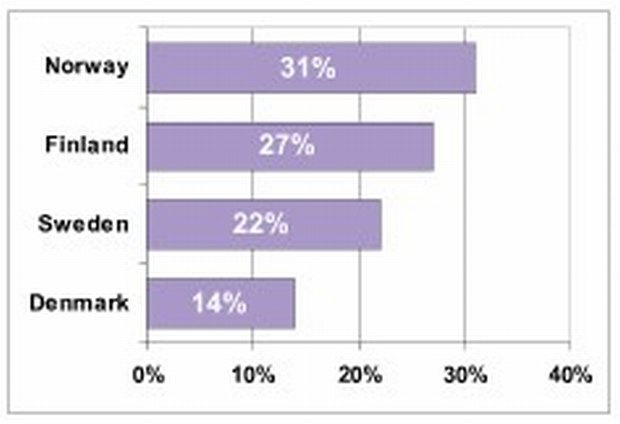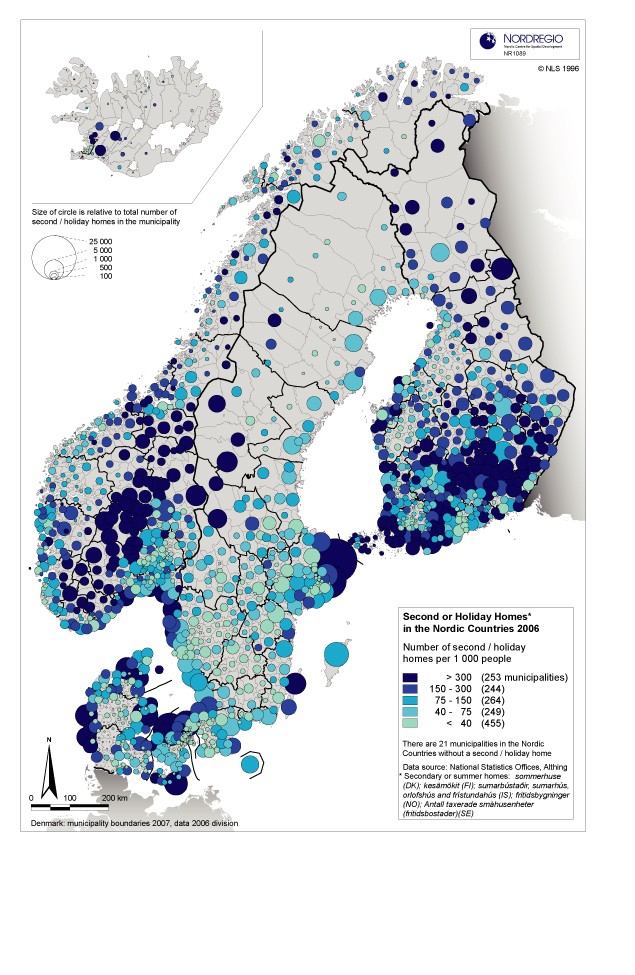Norrtälje is the Swedish municipality that caters for the highest number of tourists in the summer holiday season. In Norrtälje, the summer holiday population is estimated to increase from a normal level of 54,000 to almost 250,000 in the peak month of July. This assessment is made based on the number of beds sold in the local hospitality industry (hotels, camp sites etc.), as well as by the number of holiday homes located in the community. In Norrtälje, half of the population increase in the summer season may be attributed to second home visitors.
On average, each holiday home in Norrtälje is calculated to host three persons during the peak summer season. This is also used as the basis for calculating the number of actual inhabitants in the municipality during the holiday season or during the most popular weekends.
In several Nordic countries, the National Statistical Authorities are currently debating whether the concept of annual inhabitants should be used in a more systematic manner in order to address development issues in rural communities and municipalities that host a large number of second homes and thus occasional boosts to the local population level.
The number of annual inhabitants is a statistical variable that is sensitive to the fact that the recreational population and the occasional second home visitors also utilise local infrastructure and planning resources. For these purposes, the number of annual inhabitants (AI) may be defined as AI = regular population + (3 x number of second homes)
The difference between the regular population and the calculated annual population level will be large in municipalities with relatively few inhabitants and a high number of second homes. In populous municipalities with few recreational homes the two population measures will be almost identical, yielding a ratio approaching 1.
We can use this ratio, AI/regular population, as a proxy or indicator of the potential community impact (CI) made by second home recreational tourism locally. In the table below, we rank the six municipalities which displayed the highest community impact from this form of recreational tourism in 2006 in Denmark, Finland, Norway and Sweden.
An important observation can be made from this tentative display. First, the potential community impacts from holiday or recreational homes on the local level are much larger in small Icelandic, Finnish and Norwegian municipalities than those in Denmark and Sweden. In Sweden in particular, this may be due to the incomplete registration of second homes as these only include independent buildings and not recreational homes in multiple-dwellings (bostadsrätter). These make up a significant portion of dwellings in the most popular tourism resorts, such as Åre.
The table does not consider the fact that in many rural areas, both the primary and the secondary dwellings are located within the same municipality. This may, in particular, have boosted the community impact (CI) estimates in Finland, where almost 1 in 3 second homes are located in the municipality where the owner also has their permanent home. Kustavi and Iniö are, in fact, two of the Finnish municipalities where the ratio of second home owners who do not have to cross a municipal border to get to their secondary dwelling is highest.
Nevertheless, in all of these top-ranked municipalities the second homes pose a significant challenge to local planning and communal development. In the four Danish municipalities with the highest relative potential community impact from second home recreational tourism, these second homes outnumber the permanent, year-round dwellings by a ratio of 2 to1.
While the number of second homes, as reflected in the housing stock, is one way of assessing the topography of second homes, another way of approaching the second home/multiple dwelling phenomenon is by asking how many households own recreational homes/second homes. In the most recent Nordic survey performed by Synovate Temo for Nordea (Så ser svensken på fritidshus (May 2007)), between 14 and 31 per cent of respondents owned a second home (figure 1). Second home ownership is most common in Norway and least common in Denmark.

"Do you own a second home?" As a % of all respondents in each country

Click to view larger image.

By Jon M. Steineke